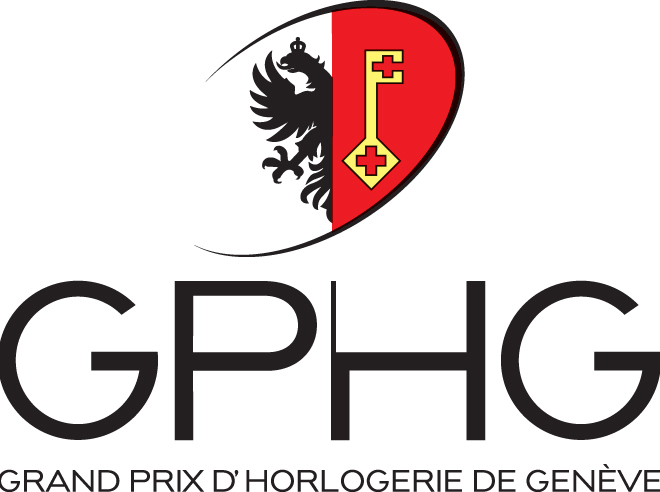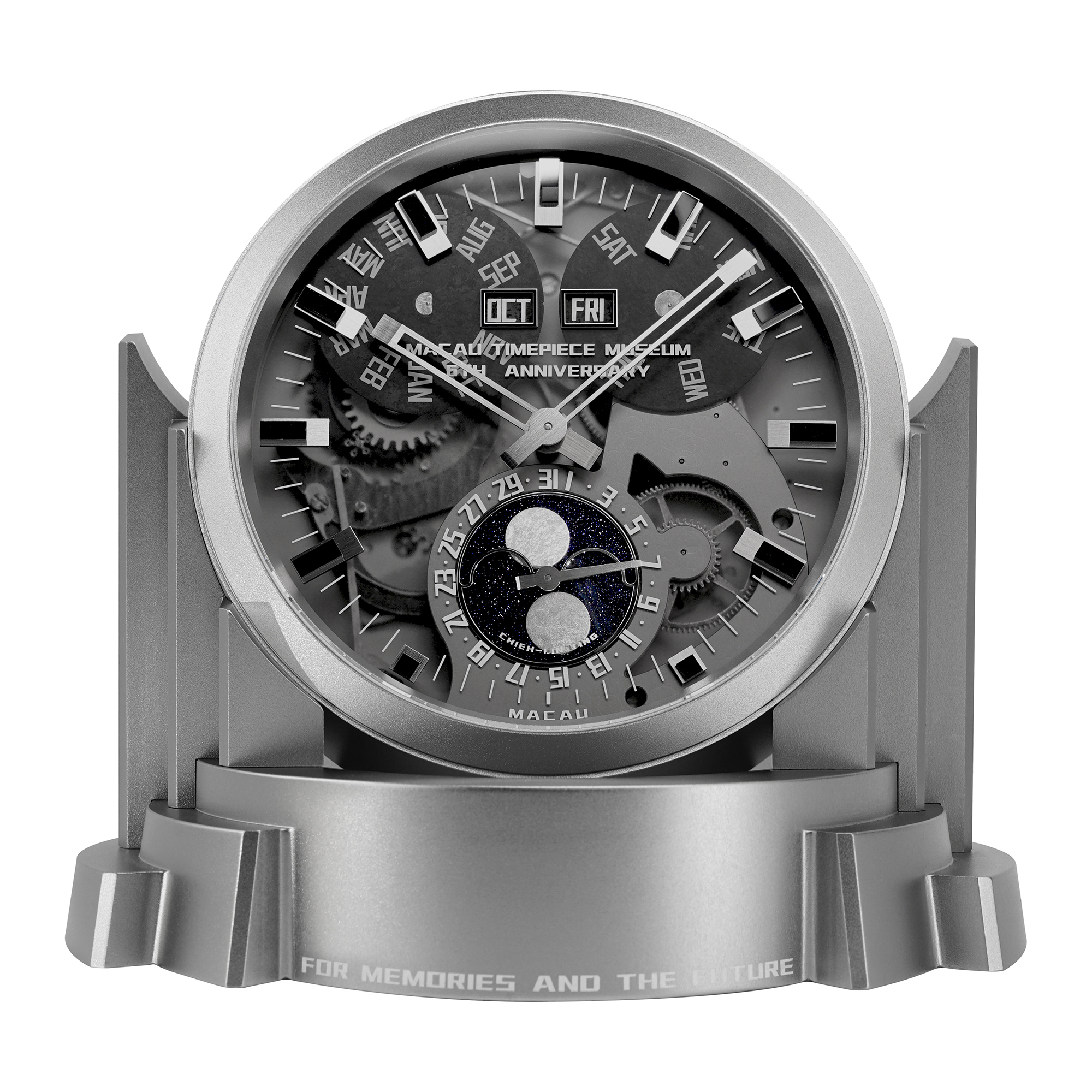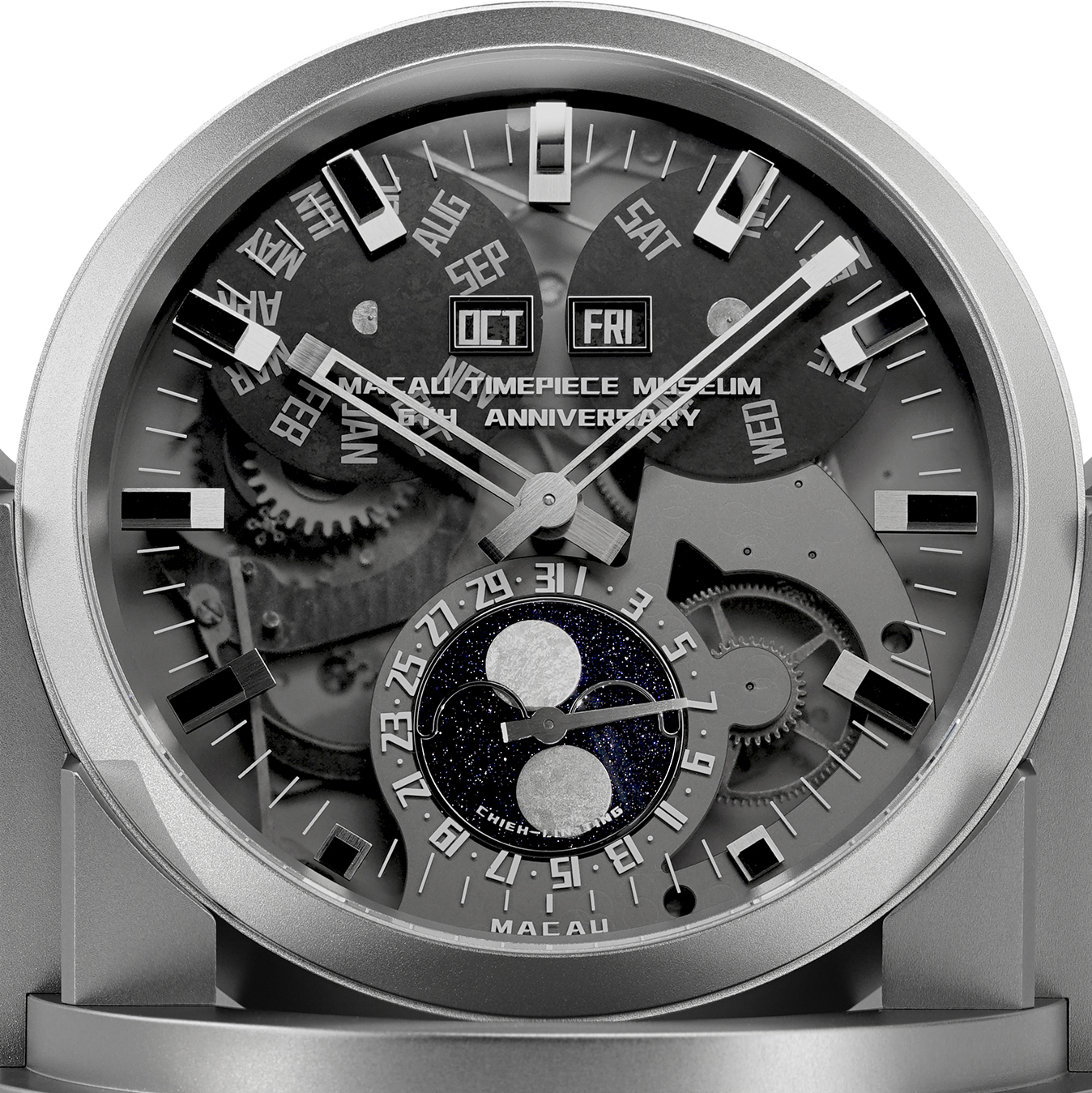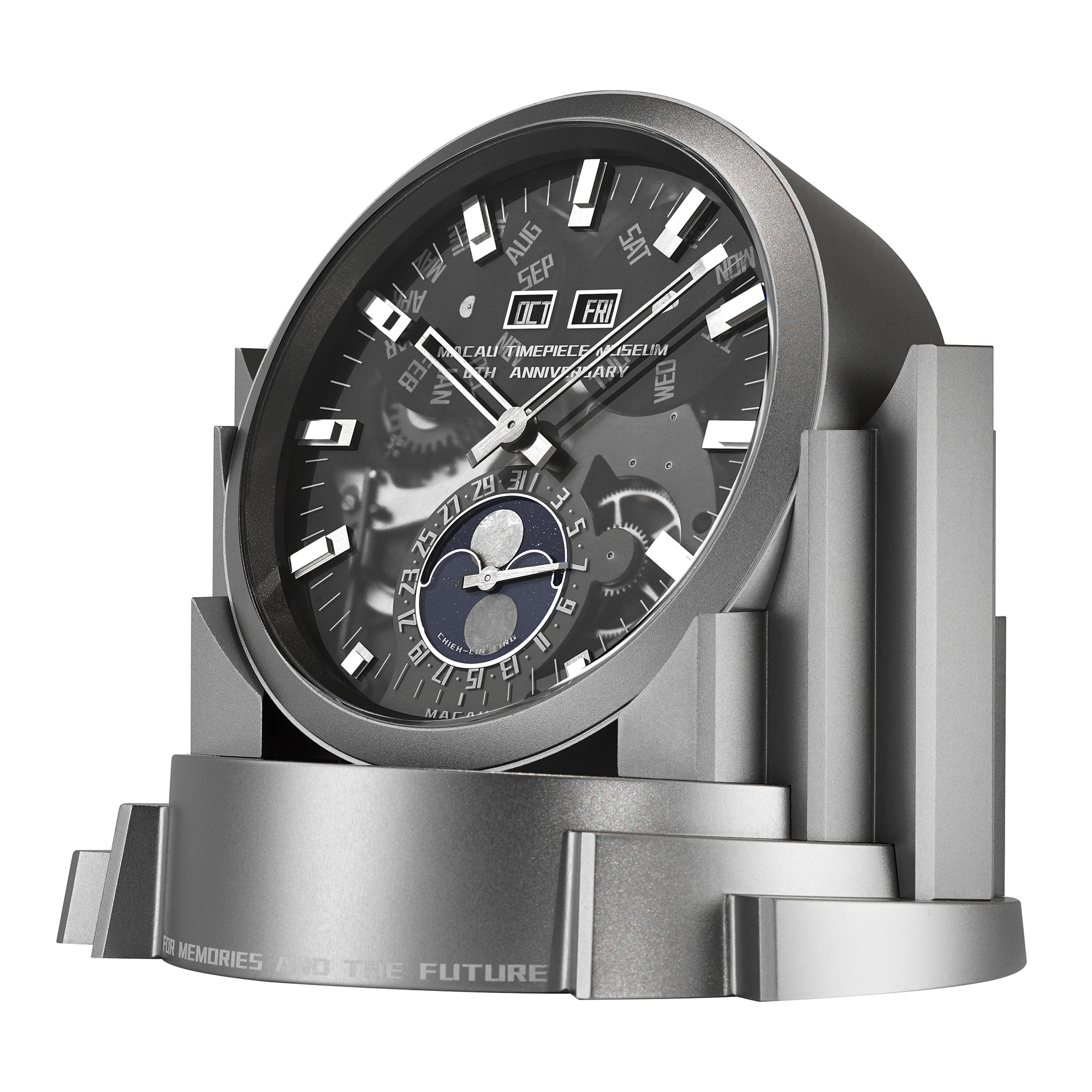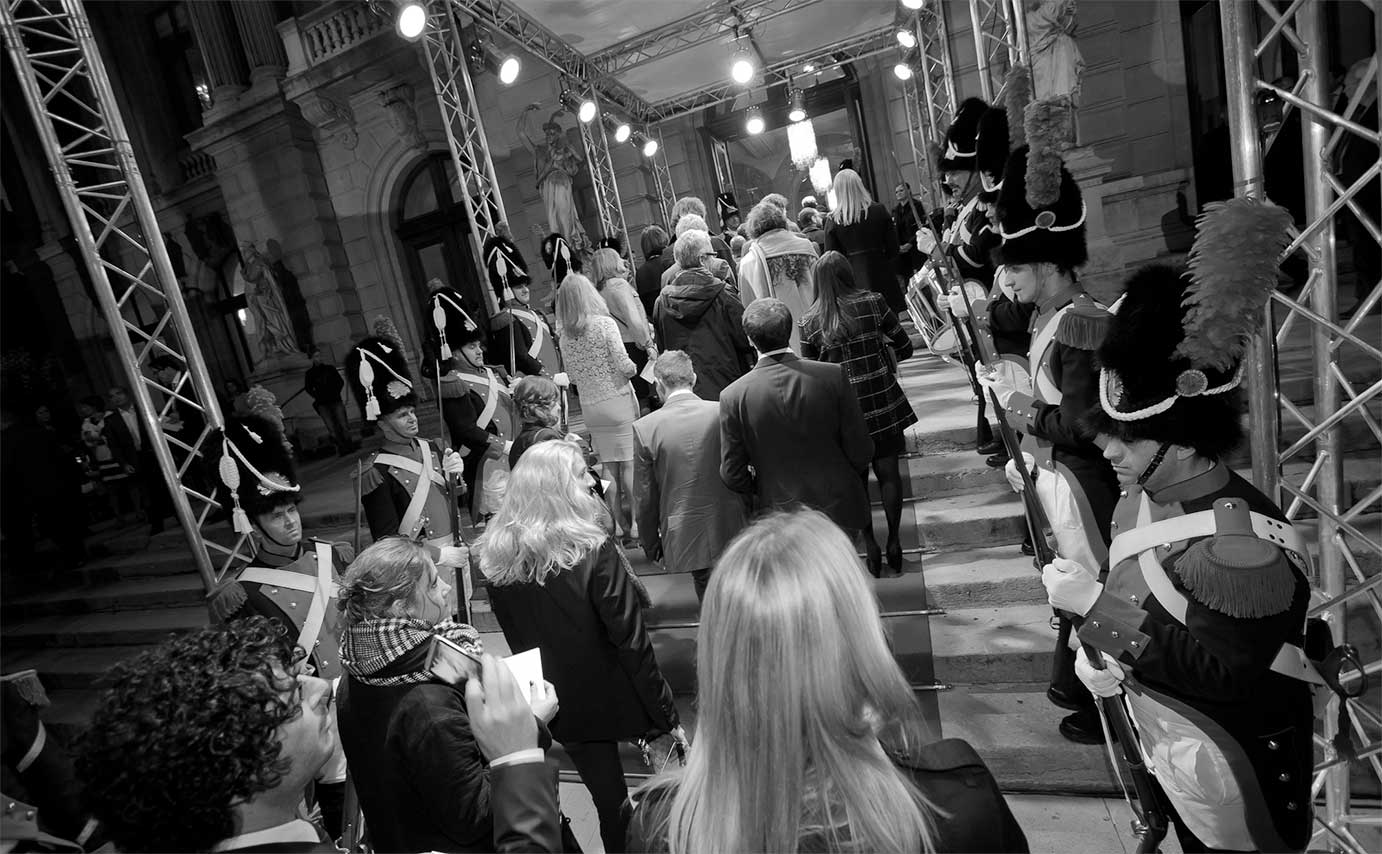
Eternal Night Secular Perpetual Calendar Desk Clock
Power reserve: 216 h, 18000 vph
Skeleton movement
Instantaneous Jumping
When the past meets the future, everything begins anew.
At the heart of the Eternal Night secular perpetual calendar desk clock beats a historical pulse—an NOS mechanical movement originally designed by Shanghai Watch Factory in 1979. This movement represents a masterpiece in Chinese horological history, serving not only civilian purposes but also playing critical roles in military and petroleum exploration applications. Yet, after just 16 years of production, it was somehow quietly discontinued, becoming a lost legend of horological history.
Fortunately, the Macau Timepiece Museum preserved a batch of these movements, untouched for three decades. On the occasion of the museum’s sixth anniversary, Kubernet founder Chieh-Lin Ting resolved to revive the legacy of this vintage movement through modern watchmaking artistry. By endowing it with an instantaneous-jumping secular perpetual calendar mechanism, he breathed new life into this legendary caliber. This innovation is not only a tribute to history but also a bold stride into the future.
Unlike conventional perpetual calendars, this true perpetual calendar automatically accommodates the Gregorian calendar's exceptional rules, including the non-leap year exceptions of 2100, 2200, and 2300. As one of the rare mechanisms capable of navigating the 400-year leap year cycle autonomously, it theoretically requires no manual adjustment throughout its operation.
Chieh-Lin Ting not only reengineered this extraordinarily complex system but also applied three patents to achieve a world-exclusive instantaneous-jumping secular perpetual calendar display: the date, day, month, and moonphase synchronize their transitions within two seconds, as if folding time itself.
400-Year Accuracy: A Horological Breakthrough
The Gregorian calendar operates on a 400-year cycle with three exceptional non-leap century years. Shattering boundaries, Kubernet's Eternal Night desk clock correctly displays all leap and non-leap years—including those three special centuries—visible through its grey glass dial without intervention. A world-first in horological history.
Born in Shanghai—a city steeped in Art Deco heritage—Chieh-Lin Ting conceived the clock's case from aerospace-grade aluminum, monolithic-milled for structural purity. The interplay of glass and metal exudes industrial precision while geometric motifs channel bold Art Deco flair, harmonizing with modern interiors.
The glass dial, only 0.6 mm thick, is made in an extremely complex process that involves cutting out the apertures, then firing at 150 ℃, and inlaying all the apertures with metal frames and 12 double-layered three-dimensional hour markers.
The case is monolithic milled from aerospace-grade aluminum, finished with a high-saturation gray anodization and glass-blasted treatment that preserves metallic radiance while imparting a crystalline luminosity.
For the moonphase display, blue aventurine is paired with silver-plated brass treated through groundbreaking metallurgical processing. Each brass disc is precision-cut before undergoing 900-1000°C thermal treatment near the melting point to achieve iridescent crystallization, with subsequent silver-plating enhancing lunar realism.
